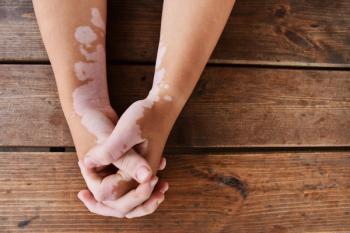
- Consultant for Pediatricians Vol 8 No 9
- Volume 8
- Issue 9
How can these forehead lesions be managed without risk of scarring?
The parents of this 8-year-old boy consult you about the warts on their son’s hands. During the examination, you discover multiple sharply defined light brown flat papules on the child’s forehead.
Case: The parents of this 8-year-old boy consult you about the warts on their son’s hands. During the examination, you discover multiple sharply defined light brown flat papules on the child’s forehead.
How would you manage these facial lesions?
Wait for the verrucae to clear spontaneously.
This young boy has flat warts (verrucae plana). Warts that occur in childhood almost always disappear spontaneously in patients who have a normal immune system. Thus, I believe that, when possible, the most prudent course is to allow for spontaneous resolution, because this results in no scarring.
Immunotherapy for warts. The “poor man’s immunotherapy” is to irritate the verrucae with a benzoyl peroxide skin wash on a daily basis; this sometimes will elicit an immune reaction. Alternatively, I have had success using imiquimod (off-label); I instruct parents to apply it to the verrucae with a toothpick on alternate nights after application of a tap water compress for 15 minutes. Either of these therapies should be continued for about 3 months; neither causes scarring. I use immunotherapy when I want to try to hasten resolution.
Physical therapies for warts. The therapies in this category that have proved to be of most value to me are light electrodesiccation and cryotherapy. However, they are associated with some risk of scarring. The probability of permanent postinflammatory hypopigmentation resulting from such treatments is related to the patient’s constituent pigmentation: the darker skinned a child is, the greater the chance that hypopigmentation will result. The risk of depressed physical scarring, however, is unpredictable; such scarring may occur even when physical treatments are performed properly.
Articles in this issue
about 16 years ago
Morgagni Herniaabout 16 years ago
Southern Tick–Associated Rash Illnessabout 16 years ago
Snakebite Envenomationabout 16 years ago
Mycobacterium marinum Infection After a Boating Accidentabout 16 years ago
Speaking About Language Development . . .about 16 years ago
Newborn With Wrinkled Abdomen and Other AnomaliesNewsletter
Access practical, evidence-based guidance to support better care for our youngest patients. Join our email list for the latest clinical updates.









